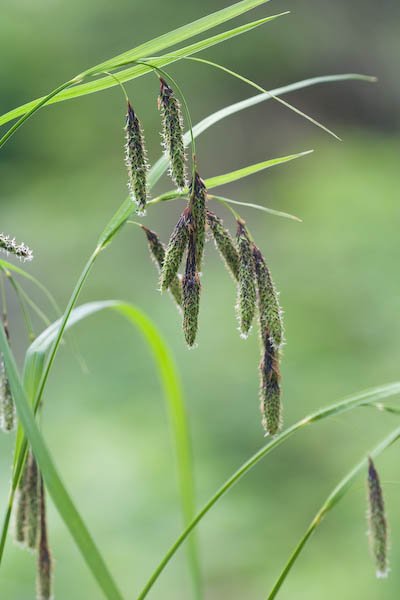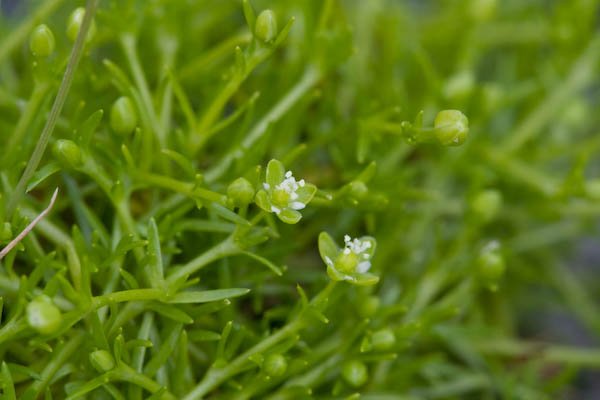
Unidentified Sedge
Carex sp.
This is probably a fairly easy sedge to identify, but I’m not particularly competent at graminoid identification. This was was a fairly large plant growing in a disturbed area along the boardwalk at Whale Park. I thought it might be Mertens Sedge (Carex mertensii), but the photos I found on-line looked different enough to make me doubt that.



False Azalea
Menziesia ferruginea
This plant has more than one common name. Others include Fool’s Huckleberry and Rusty Menziesia. Superficially, it does look like a huckleberry, but close inspection reveals several differences, including hairy leaves, different colored and shaped stems, and different looking flowers (though the bell shape is similar). This plant is a common shrub in the forests around Sitka.
Other Photos

Three-leaf Foamflower
Tiarella trifoliata
This is a fairly common plant in the forests around Sitka. The flowers are fairly small, but apparently reminded someone of flecks of foam, given the common name.



Bird’s Eye Pearlwort
Sagina procumbens
I’m not positive about this identification, but it definitely looks to me like a Sagina, and it certainly is not Beach Pearlwort. It does not seem to fit the descriptions of the other native pearlworts in the region, so I’m left concluding it is this introduced species.
This species is fairly inconspicuous, though I have noticed it growing several places in hard-packed gravel (generally at the edge of a road).




Deerheart
Maianthemum dilatatum
This is a very common plant in the woods. Its leaves can completely obscucre the ground below them. Another common name is False Lily-of-the-Valley, but I prefer the name I learned growing up. I’m not sure, but I think deer utilize the leaves as food, since I have seen where the leaves had been browsed, and deer seem the most likely candidate. The flowers are sweet scented, and it forms red berries that can often be found on their long stem through the winter, long after the leaves have decayed.

Other Photos












